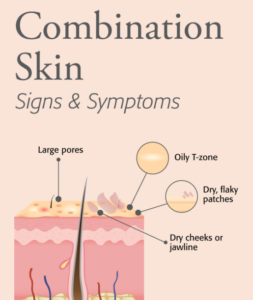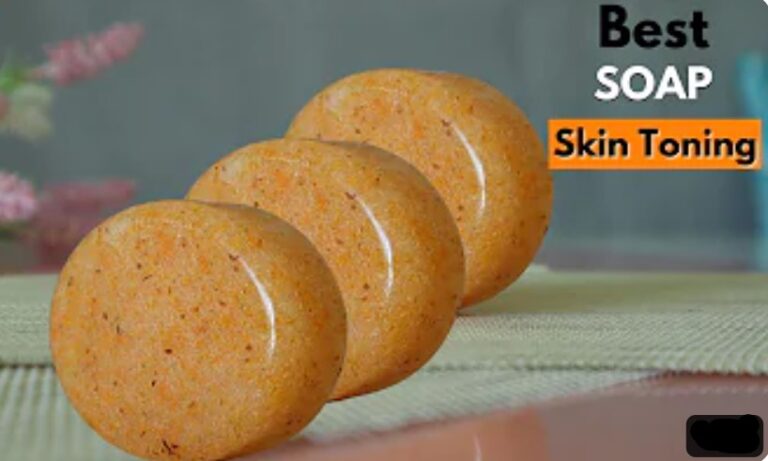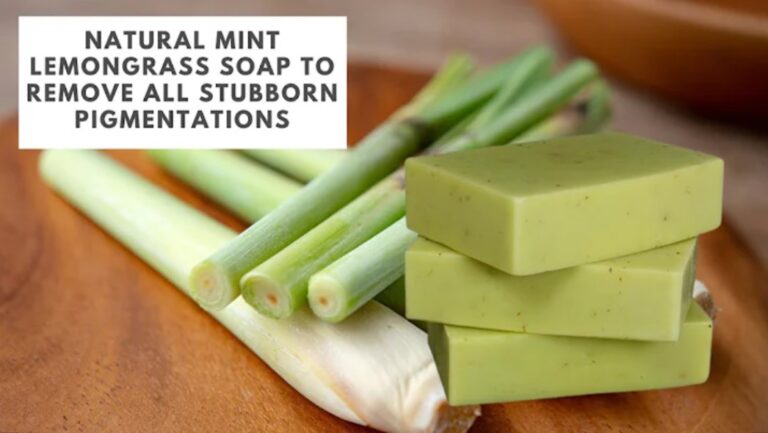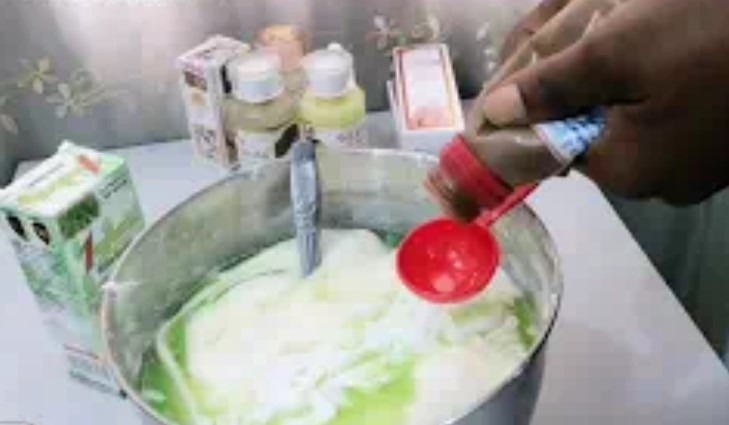Skincare for Combination Skin
Before we discuss Do you know that listening to your skin and adjusting your routine as needed is the best form of skincare? Always remember to consult a dermatologist for personalized advice and recommendations if you notice any specific concerns or persistent issues.

What is Combination Skin?
It is defined as having different types of skin in one area of the body, ie having both oil, dry, and normal skin on the face or other different parts of your body.
Combination skin can be tricky to take care of because it tends to be both oily and dry in different areas. However, you can balance and maintain healthy-looking skin with the proper skincare routine.
Characteristics of combination skin
- Having oily And Dry Skin Spots
- The person experiences mild breakouts & dryness at the same time
- Having larger pores on your nose, chin And forehead
- It makes makeup look patchy
- It makes skin get oilier in summer and drier in winter
Here are some tips and recommendations for a skincare routine for combination skin:
Cleansing:
-
- Use a gentle cleanser that removes impurities without stripping away natural oils. Look for a pH-balanced cleaner suitable for all skin types.
- Avoid harsh cleansers or those containing sulfates, as they can be too drying for the dry areas of your skin.
Toning:
-
- Follow cleansing with a mild, alcohol-free toner to balance the skin’s pH and remove any residue left after cleansing.
- Look for toners with ingredients like rose water or witch hazel, which can help control oiliness and soothe the skin.
Moisturizing:
-
- Opt for a lightweight, oil-free moisturizer to hydrate the dry areas of your skin without adding excess oil to the oily areas.
- Consider using a moisturizer that contains hyaluronic acid, which helps retain moisture, or niacinamide, which can regulate oil production.
Sun protection:
-
- Regardless of your skin type, protecting your skin from harmful UV rays is crucial. Use broad-spectrum sunscreen with at least SPF 30 daily, even on cloudy days.
- Choose a lightweight, non-greasy sunscreen specifically formulated for the face.
Exfoliation:
-
- Exfoliate your skin 1-2 times weekly to remove dead skin cells and unclog pores. This step can help control oiliness and prevent breakouts.
- Use a gentle exfoliator with chemical exfoliants like salicylic acid or glycolic acid, as they are practical yet less likely to irritate the skin.
Spot treatments:
-
- For areas prone to breakouts or excessive oiliness, consider using spot treatments with ingredients like benzoyl peroxide or tea tree oil.
- Apply these treatments only on the affected areas rather than all over the face to avoid drying out the rest of your skin.
Masks:
-
- Incorporate face masks into your skincare routine to address specific concerns. Clay masks can help control oiliness while hydrating masks can nourish dry areas.
- Look for masks suitable for combination skin, or use targeted masks on different areas of your face as needed.
Causes Combination Skin
- Genes: Combination skin is genetic. Generally, this skin type is characterized by non-uniform oil production.
- Hormonal Influences: Sebaceous glands (sebum) have receptors on them, which respond to your hormones, including testosterone and estrogen. The more testosterone that’s produced, the more oil is produced in the skin.
- Environmental Factors: According to Byrdie: “Prolonged humid conditions cause sweat glands to produce more sweat, leaving the skin moist and shiny, whereas, prolonged heat (low humidity), causes skin to dehydrate and increases sensitivity (because the water content of the epidermis tends to reflect the level of humidity around it).”
ARTICLE SOURCES
- Sakuma TH, Maibach HI. Oily skin: an overview. Skin Pharmacol Physiol. 2012;25(5):227-235. doi:10.1159/000338978
- Herman J, Rost-Roszkowska M, Skotnicka-Graca U. Skin care during the menopause period: noninvasive procedures of beauty studies. Postepy Dermatol Alergol. 2013;30(6):388-395. doi:10.5114/pdia.2013.39430
- Engebretsen KA, Johansen JD, Kezic S, Linneberg A, Thyssen JP. The effect of environmental humidity and temperature on skin barrier function and dermatitis. J Eur Acad Dermatol Venereol. 2016;30(2):223-249. doi:10.1111/jdv.13301






